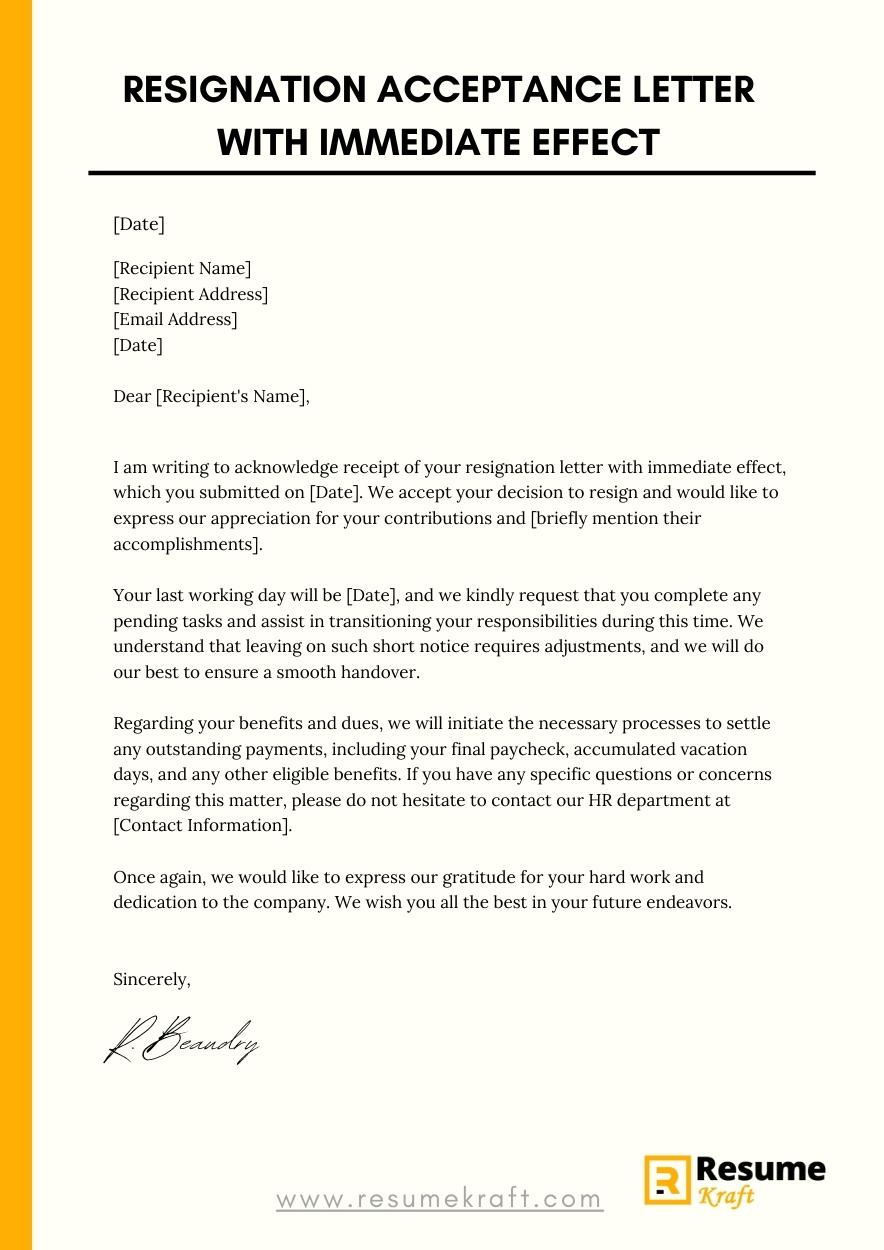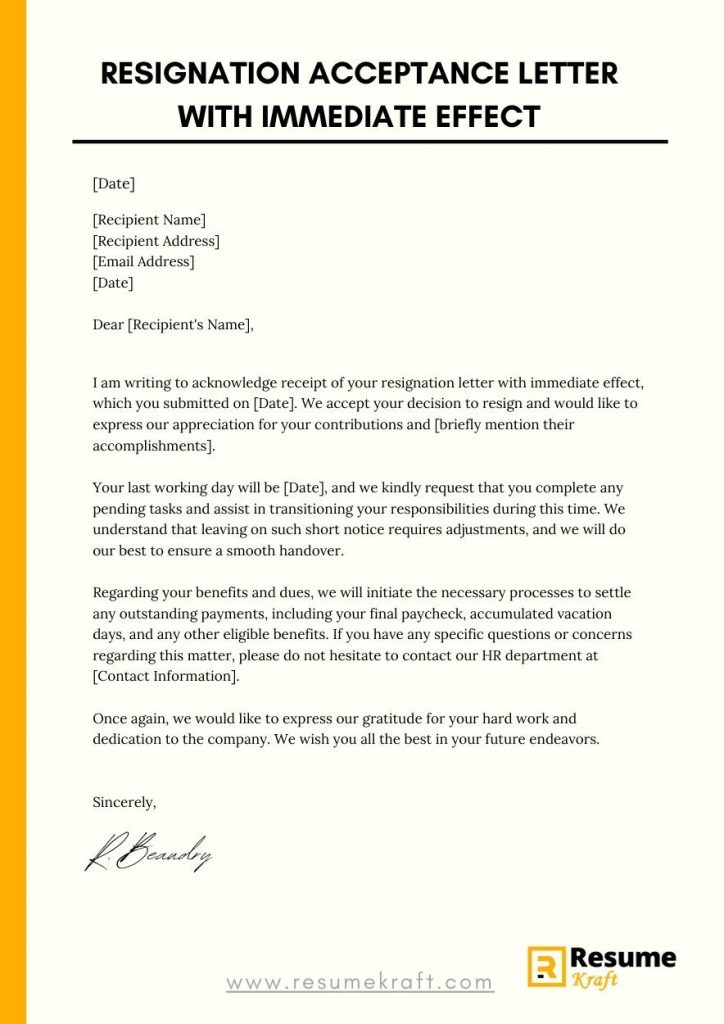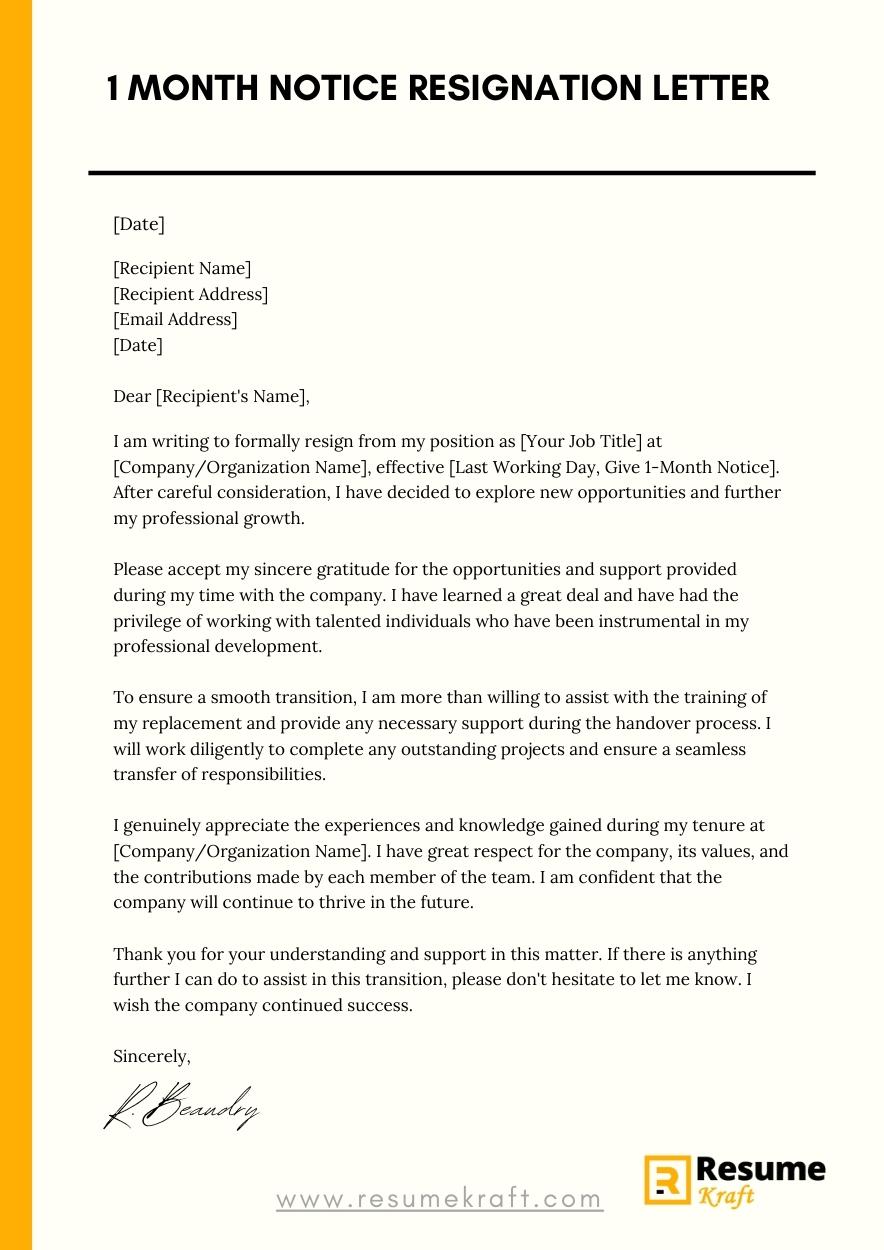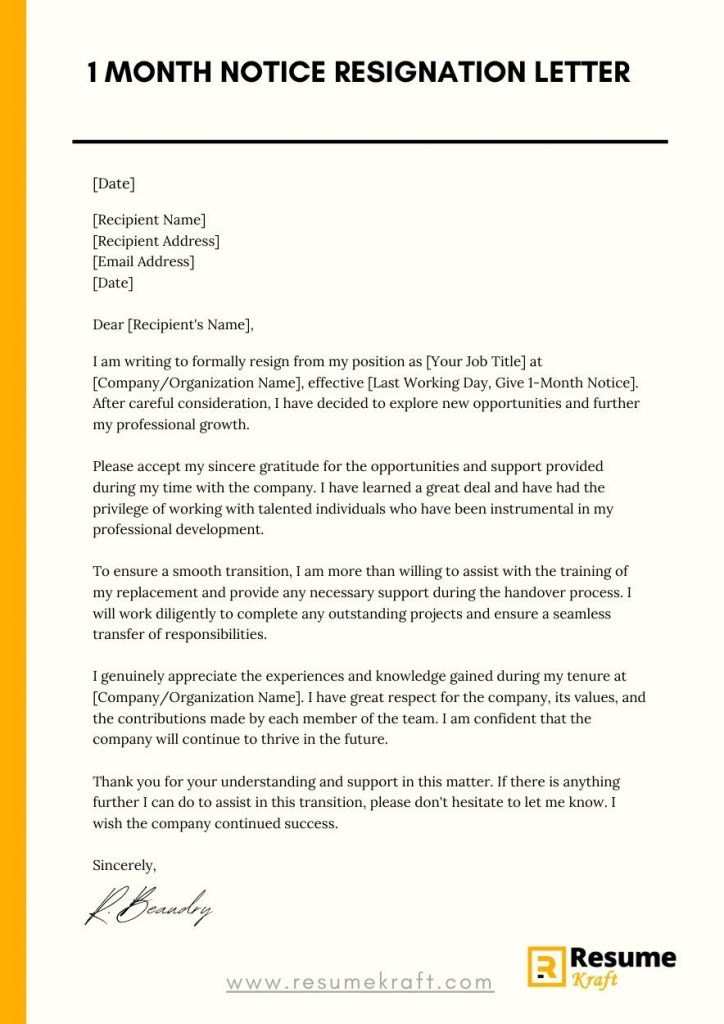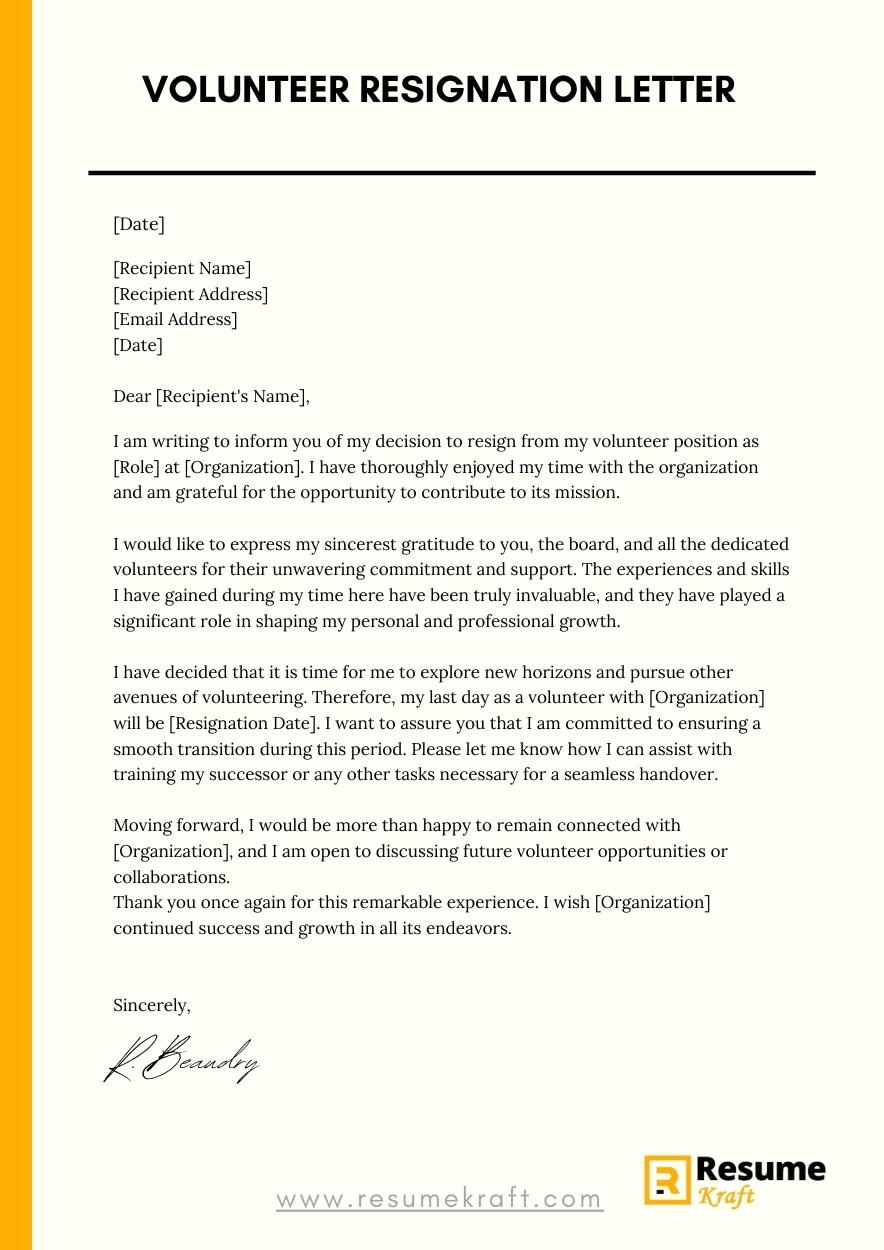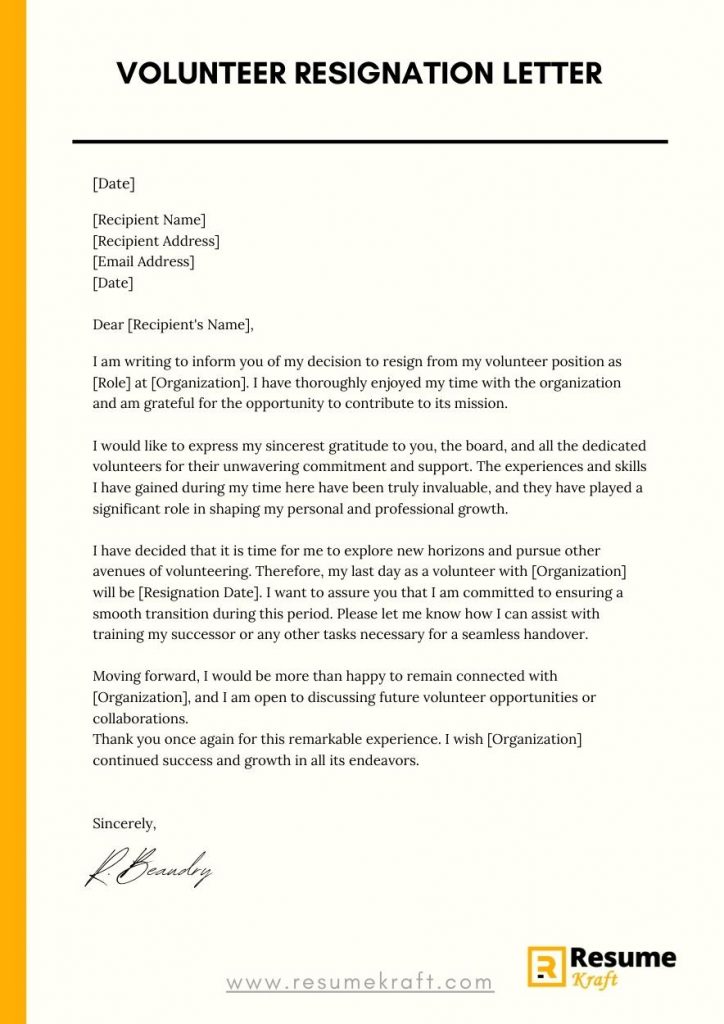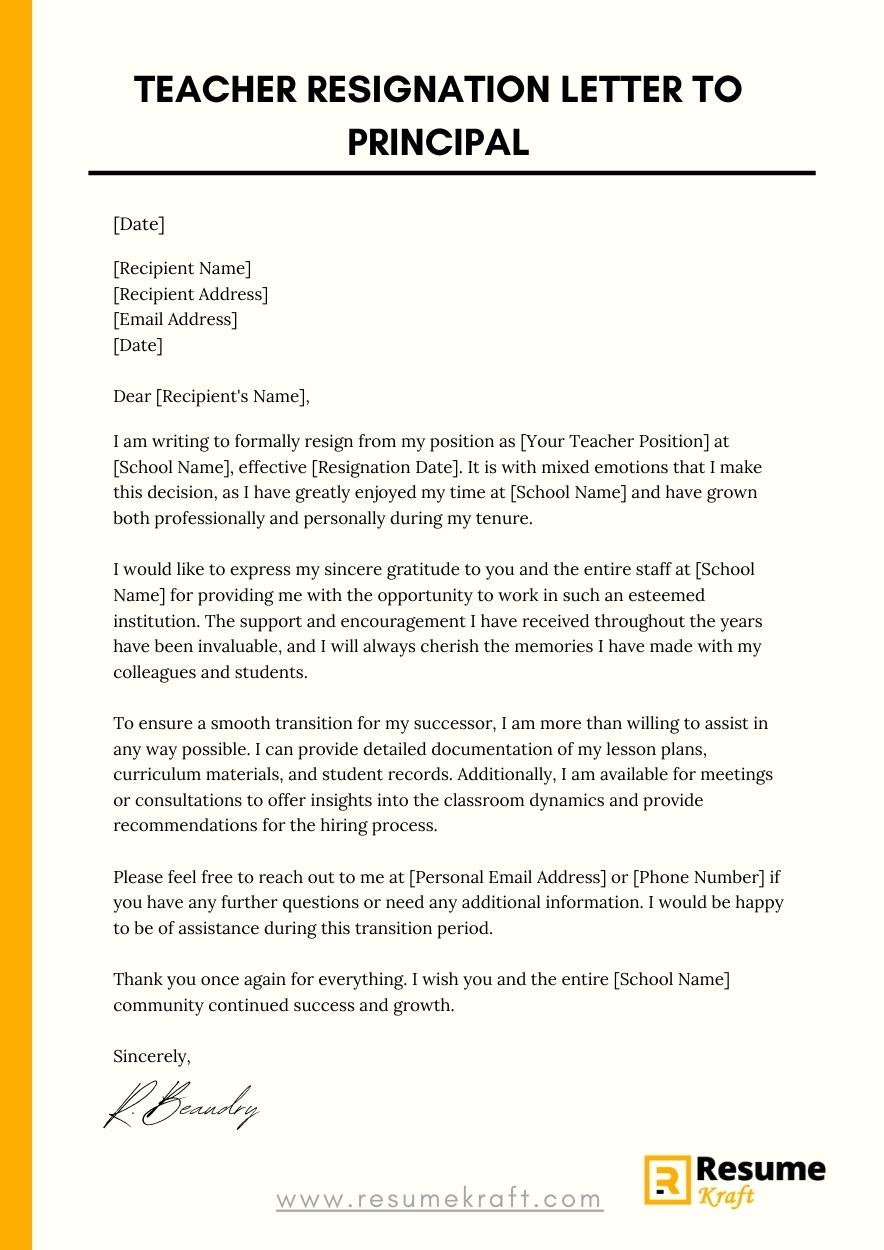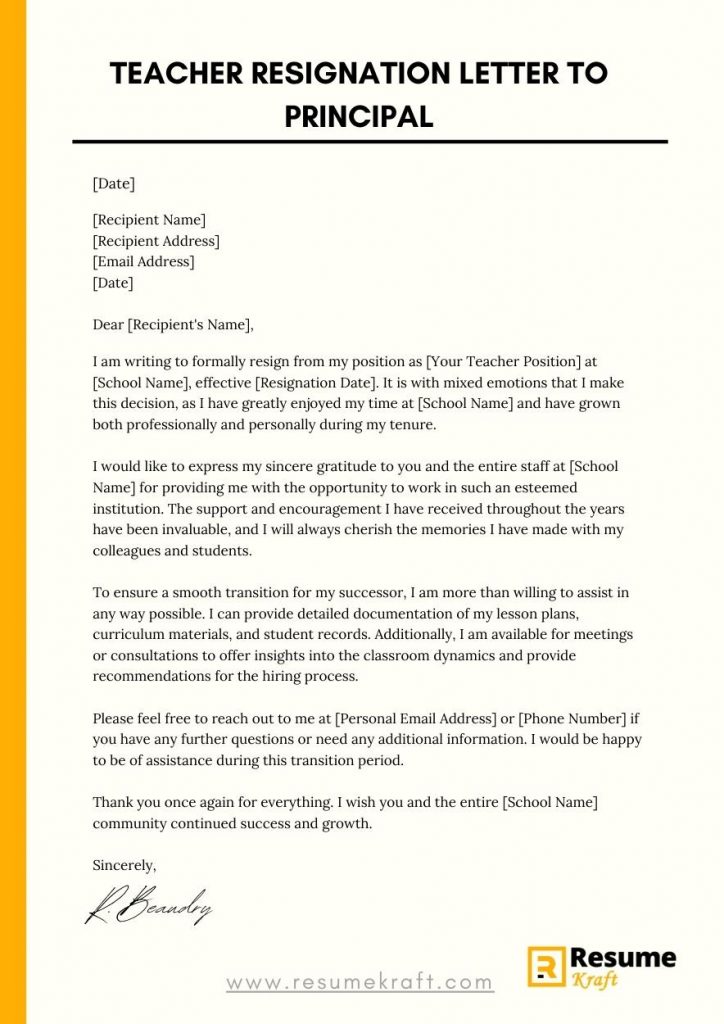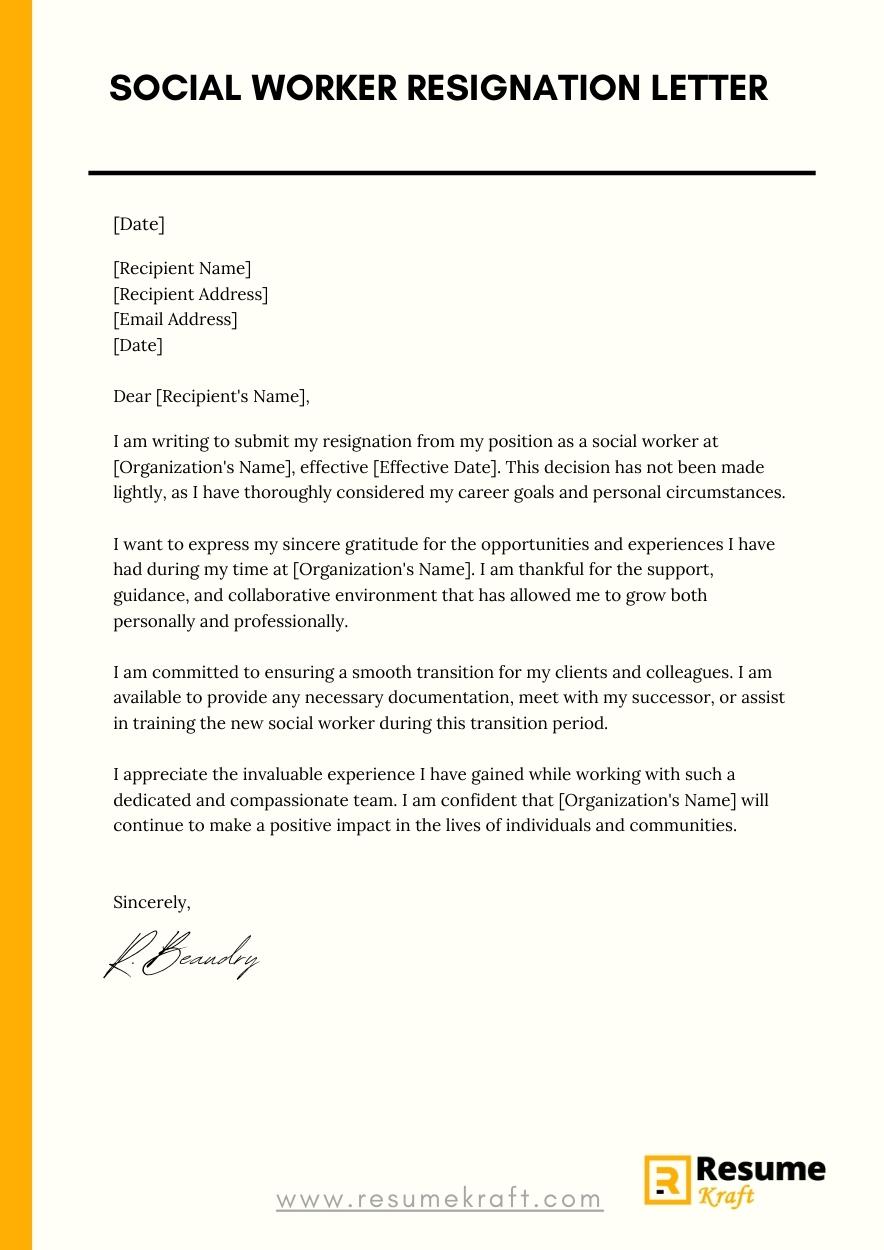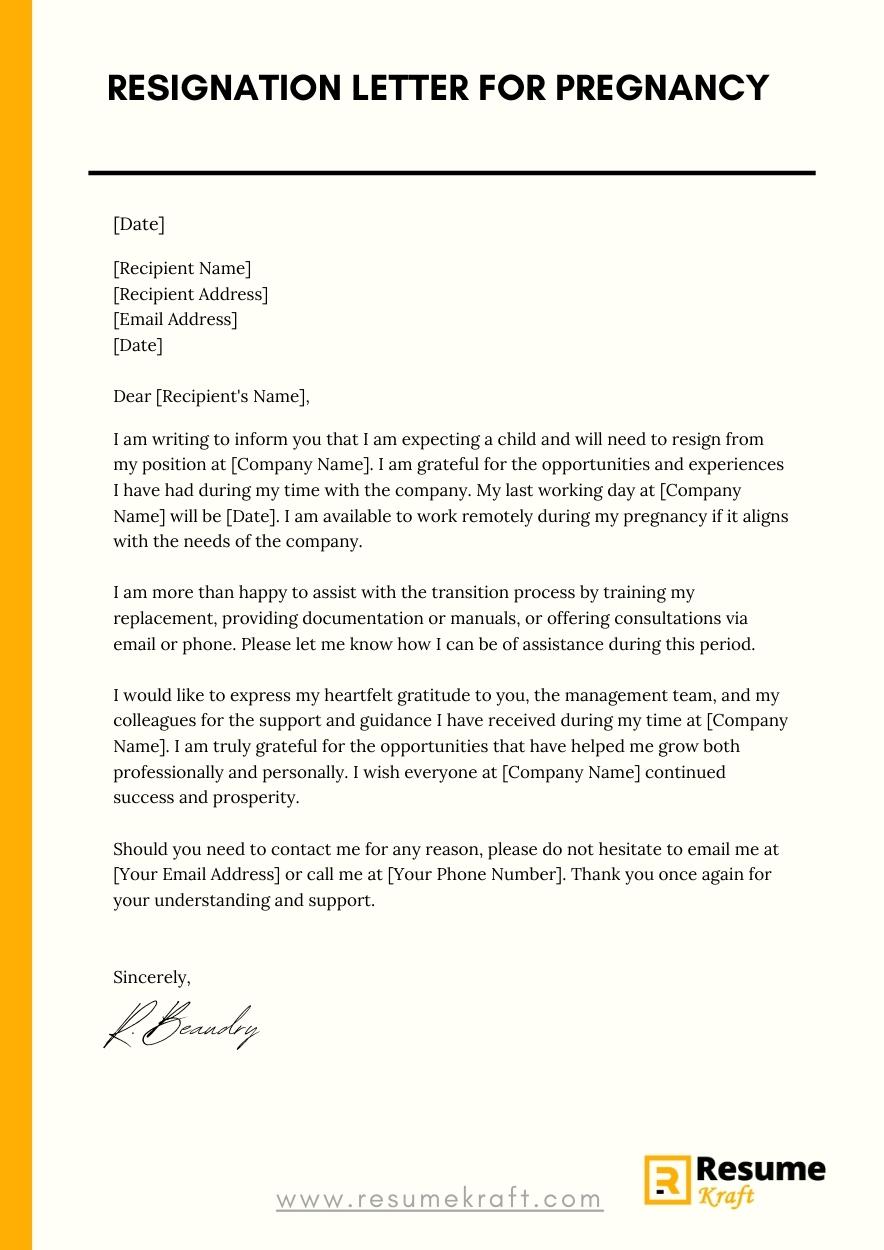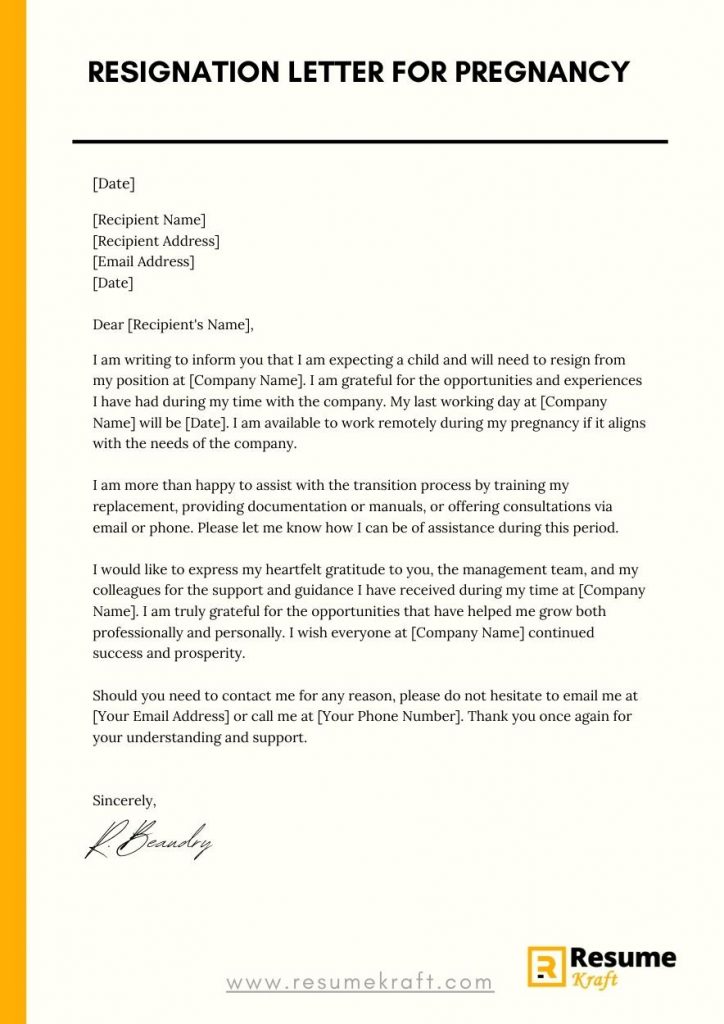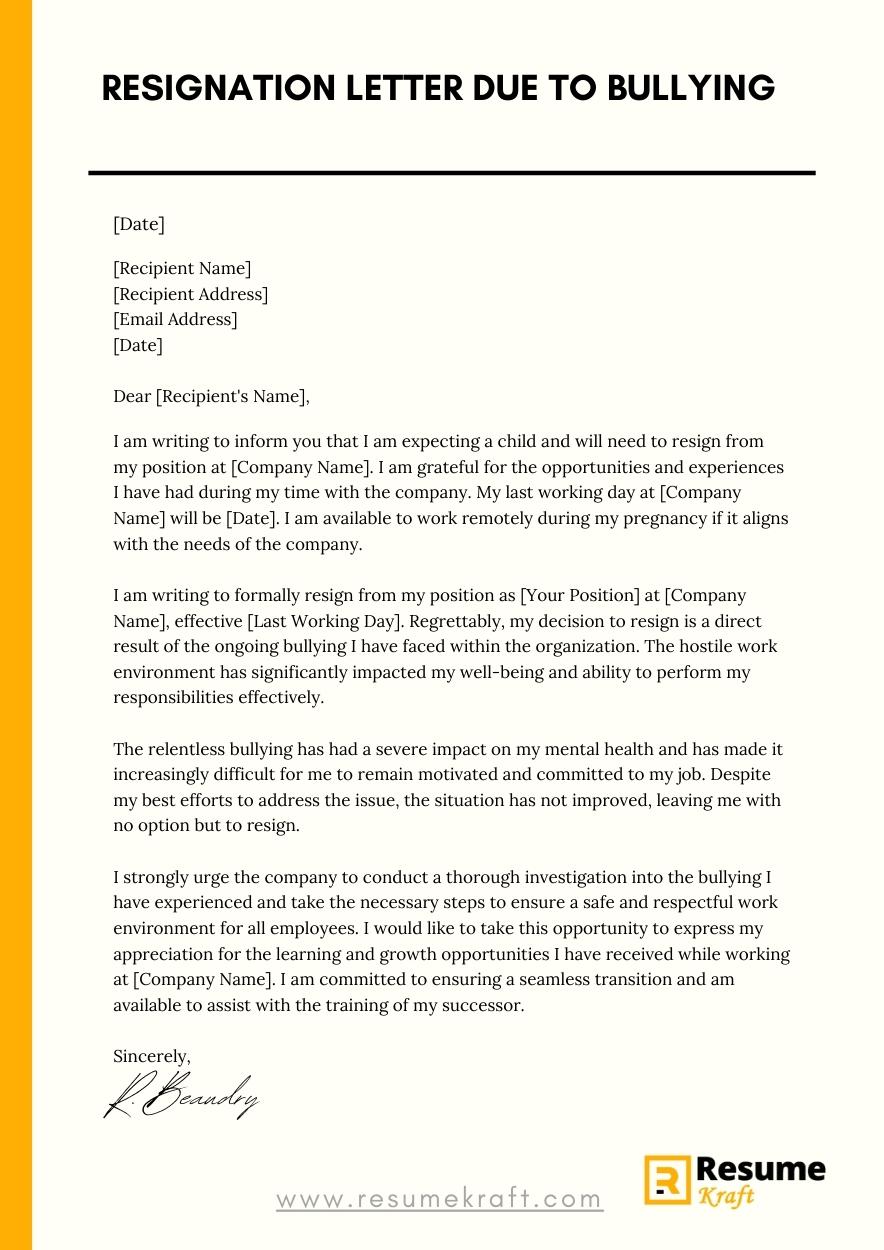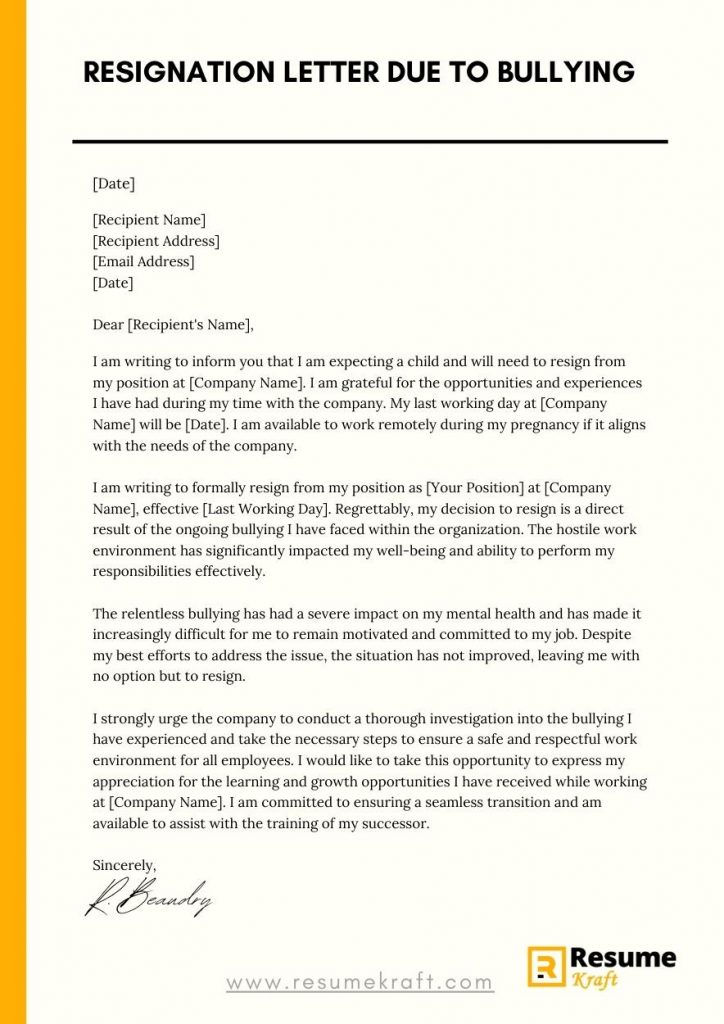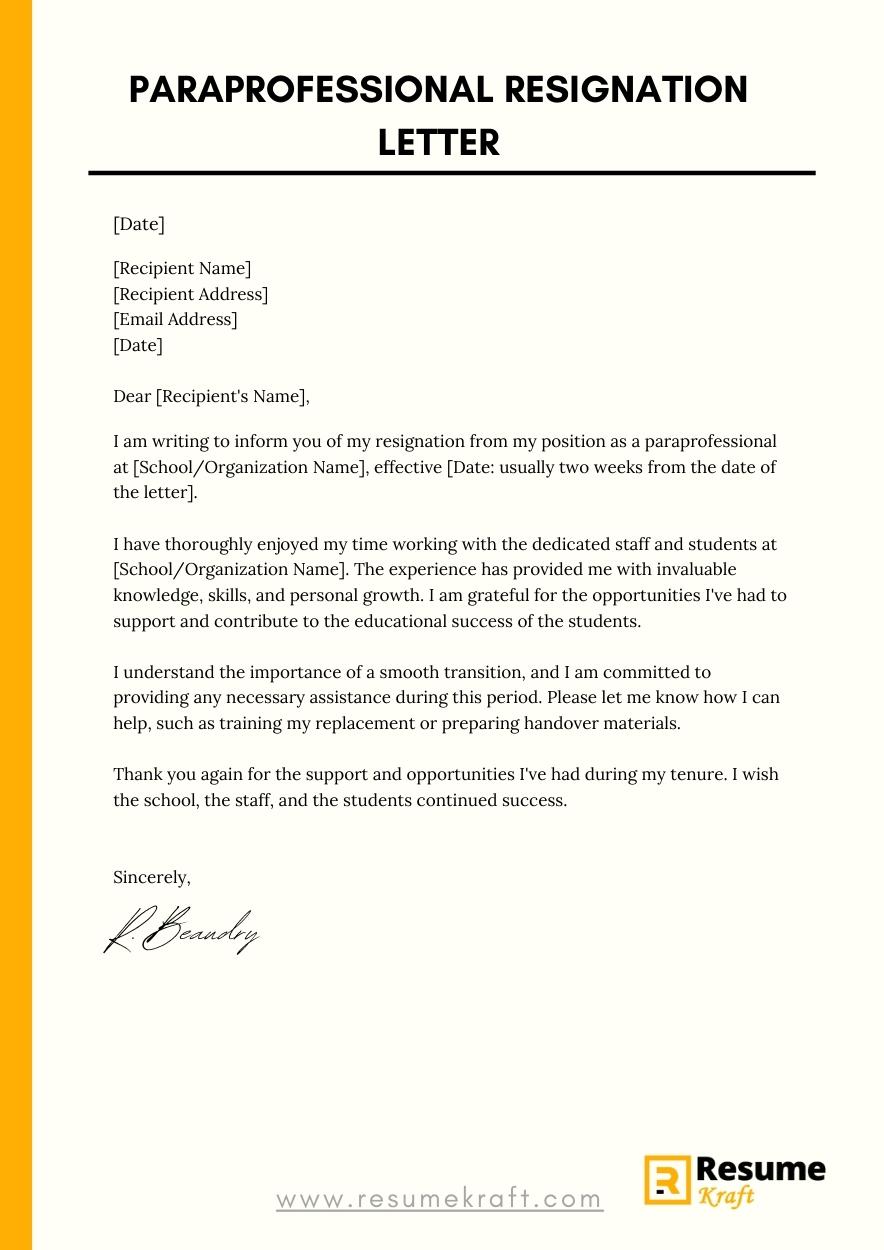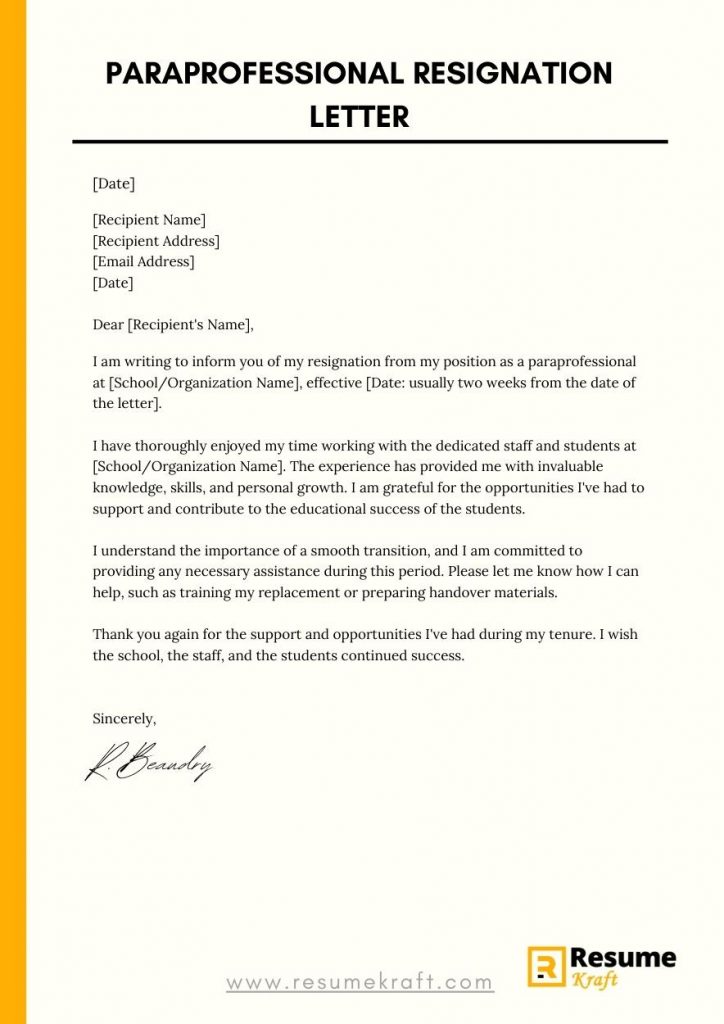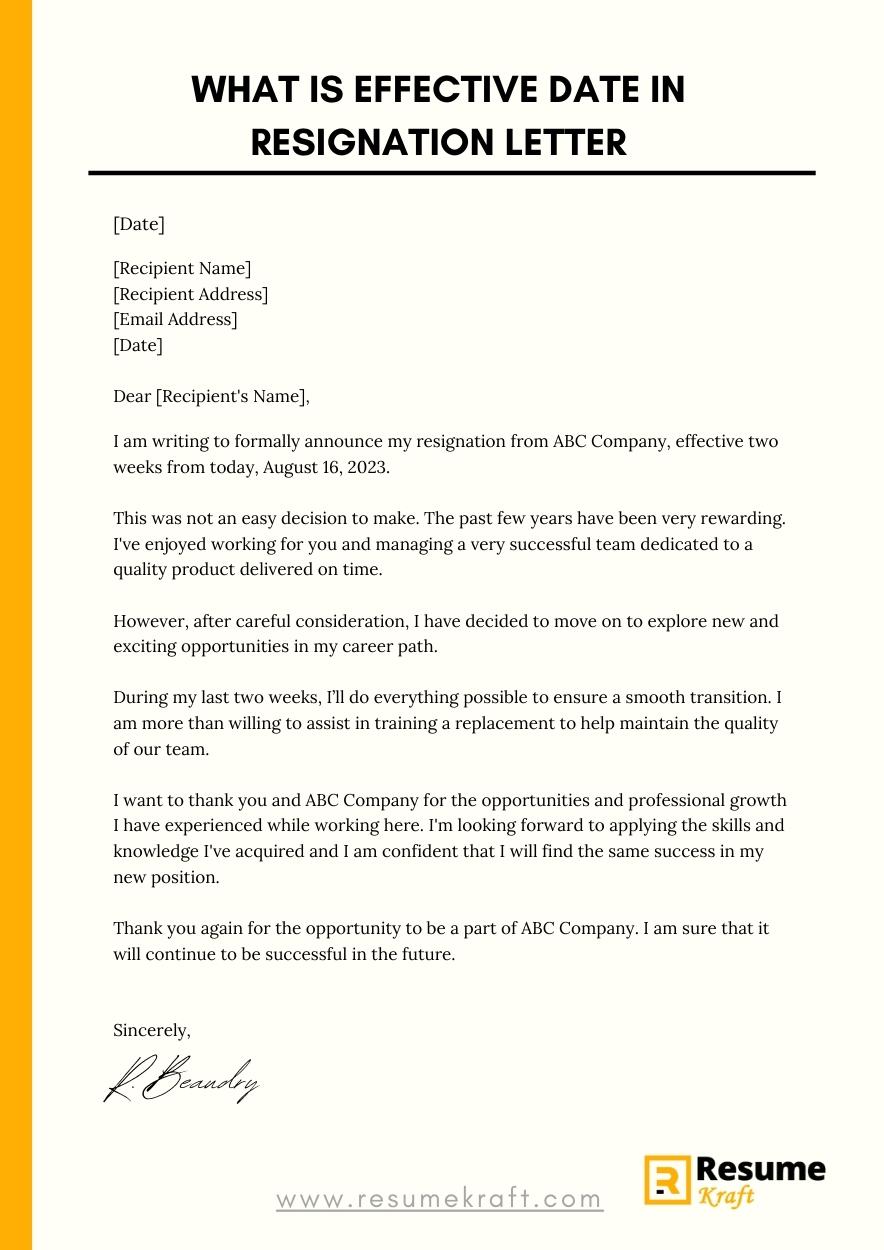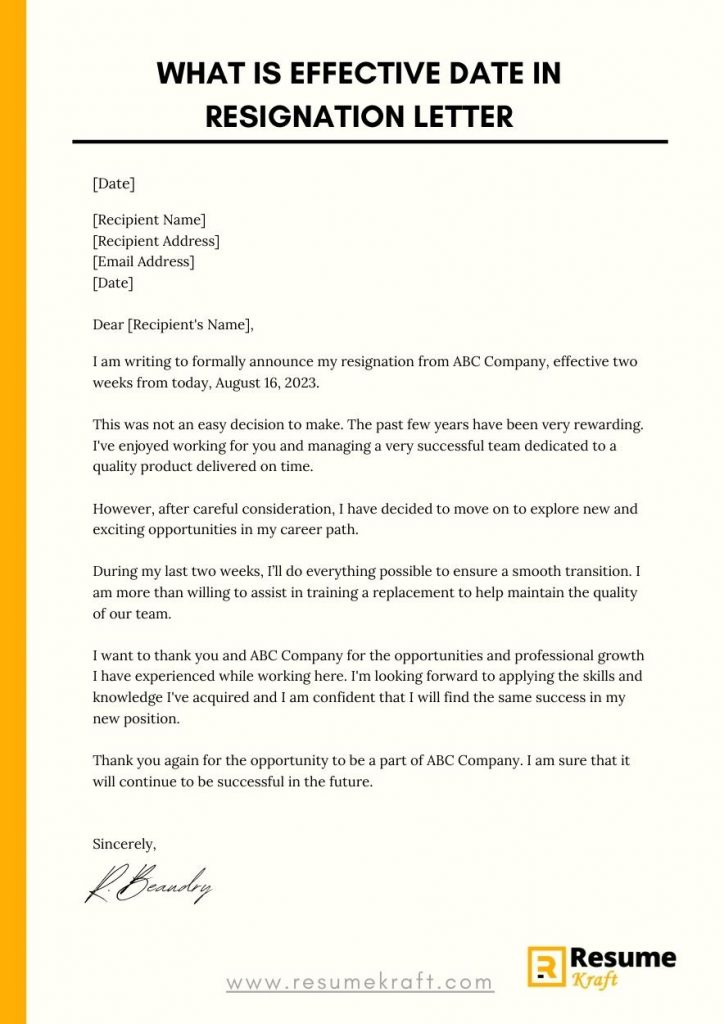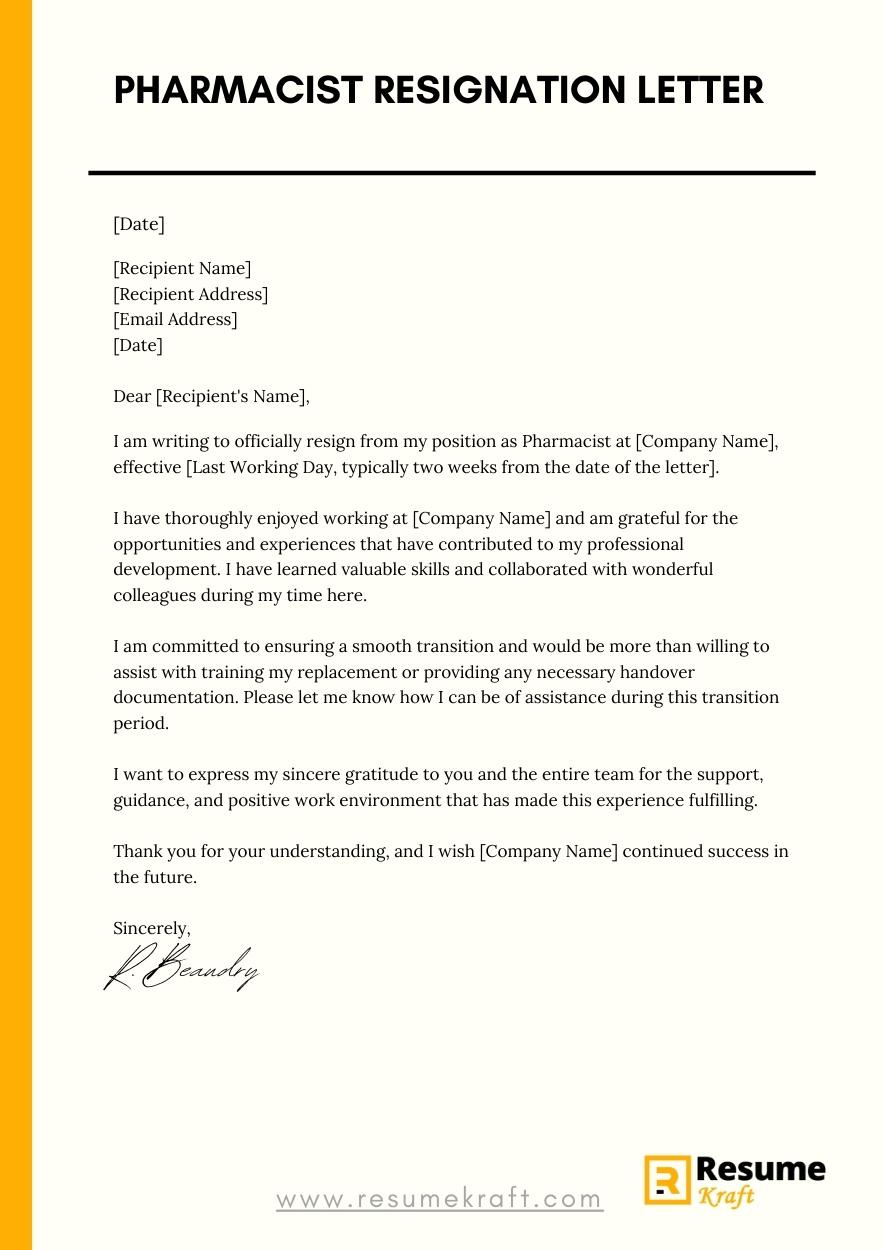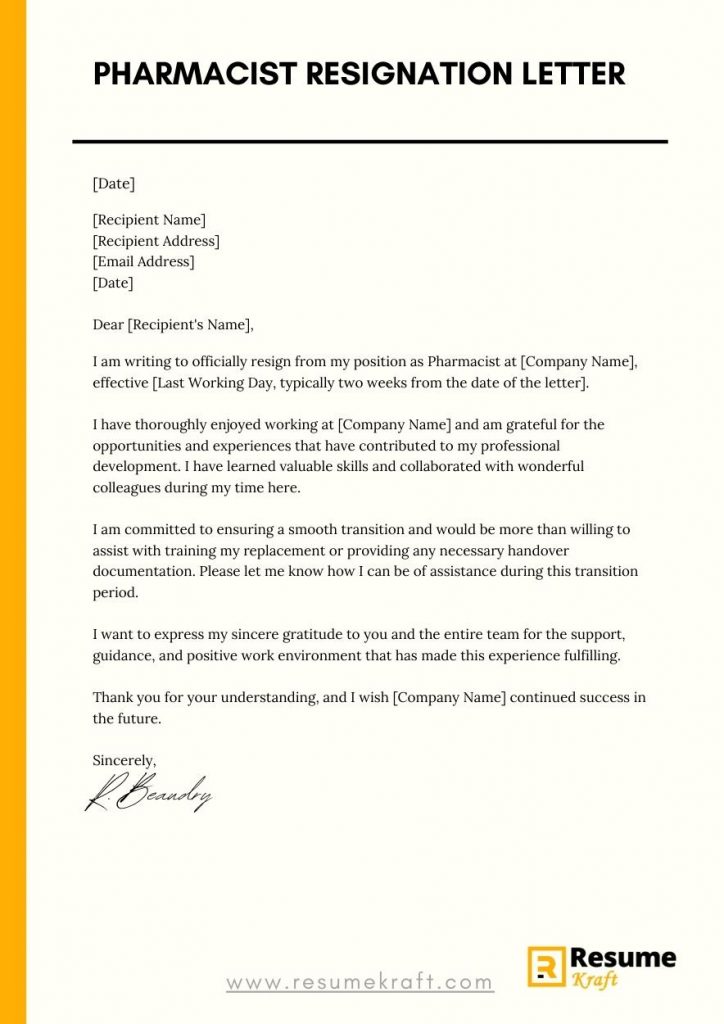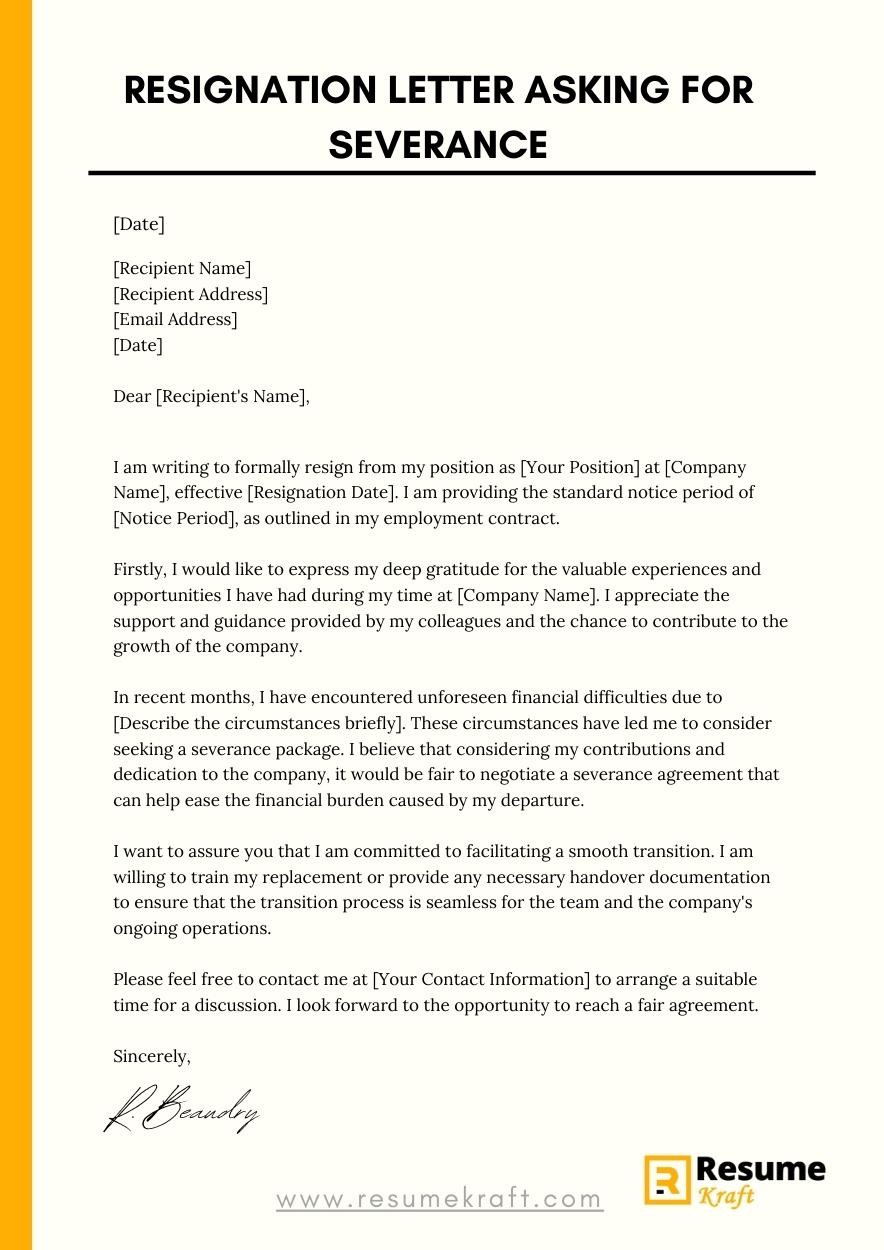
How To Write a Resignation Letter Asking for Severance (With Sample)
Are you considering resigning from your job and want to negotiate a severance package? Writing a resignation letter asking for severance can be a professional and effective way to communicate your intentions and initiate the negotiation process. In this guide, we will provide you with a step-by-step approach to crafting a compelling resignation letter, what to include and what to avoid, and provide you with real-life resignation letter samples to help you get started.
What To Include in a Resignation Letter Asking for Severance
When writing a resignation letter asking for severance, it is important to include specific details and maintain a professional tone. Here are the key elements you should consider including in your letter:
1. Address the letter to the appropriate person
Begin by addressing your resignation letter to your supervisor or manager. If you are unsure who to address it to, check your employment contract or consult with your HR department.
2. State your intention to resign
Clearly state your intention to resign from your current position. Be direct and avoid using ambiguous language. Mention the date of your resignation and specify whether you are providing the standard notice period.
3. Express gratitude
Express gratitude for the opportunities and experiences you have had during your time with the company. Acknowledge the skills and knowledge you have gained and the positive impact the company has had on your professional growth.
4. Explain your reasons for seeking severance
In a respectful and concise manner, explain your reasons for seeking a severance package. Highlight any extenuating circumstances or reasons that justify your request. Be sure to outline the financial impact and why you believe it is a fair request.
5. Provide a transition plan
Offer to assist in the transition process by outlining your willingness to train a replacement or provide any necessary handover documentation. Showing your commitment to ensuring a smooth transition can help strengthen your negotiation for severance.
6. Express willingness to negotiate
Convey your openness to negotiate the terms of the severance package. State that you are willing to engage in a discussion to find a mutually beneficial solution for both parties.
7. Sign off professionally
End your resignation letter with a professional closing, such as “Sincerely” or “Best Regards,” followed by your name and contact information.
What Not to Include in Your Resignation Letter Asking for Severance
While it is important to include certain elements in your resignation letter, there are also some things you should avoid mentioning:
1. Negative comments or criticisms
Refrain from including negative comments or criticisms, whether directed towards the company, your colleagues, or any individuals within the organization. Keep your resignation letter focused on your request for severance and maintain a professional tone throughout.
2. Demands or threats
Avoid making demands or ultimatums in your resignation letter. Instead, approach the conversation with a willingness to negotiate and find a fair resolution. Using threats or aggressive language can diminish the chances of a successful negotiation.
3. Personal grievances
While it may be tempting to include personal grievances or past conflicts in your resignation letter, it is best to keep your focus on the severance request. Sharing personal issues can overshadow your main objective and complicate the negotiation process.
4. Lengthy explanations
Keep your resignation letter concise and to the point. Avoid unnecessary details or lengthy explanations that can distract from your main message. Focus on the key points that support your request for severance.
5. Emotional language
Maintain a professional and formal tone throughout your resignation letter. Avoid using emotional language or expressing frustration or anger. Emotional language can undermine the seriousness and professionalism of your request.
How To Format a Resignation Letter Asking for Severance
When formatting your resignation letter asking for severance, it is important to follow a professional and standardized structure. Here are some formatting tips to consider:
1. Use a formal letter format
Begin your resignation letter with a formal header that includes your name, address, contact information, and date. Follow this with the recipient’s name, job title, company name, and address.
2. Use a professional font and size
Choose a professional font such as Arial or Times New Roman, and use a font size between 10 and 12 points. This ensures that your letter is easy to read and maintains a professional appearance.
3. Use clear and concise paragraphs
Break your resignation letter into clear and concise paragraphs that address each element mentioned earlier. This helps to maintain clarity and ensures that your letter is easy to understand.
4. Use a professional tone
Maintain a professional and formal tone throughout your resignation letter. Avoid using colloquial language or slang, and ensure that your sentences are clear and grammatically correct.
5. Proofread for errors
Before finalizing your resignation letter, proofread it for any grammatical or spelling errors. Ensure that your letter is well-structured, coherent, and free from any typos that may undermine your professionalism.
Now that you have a clear understanding of what to include and what to avoid in your resignation letter asking for severance, let’s take a look at some real-life resignation letter samples to help you craft your own.
Resignation Letter Asking for Severance Samples
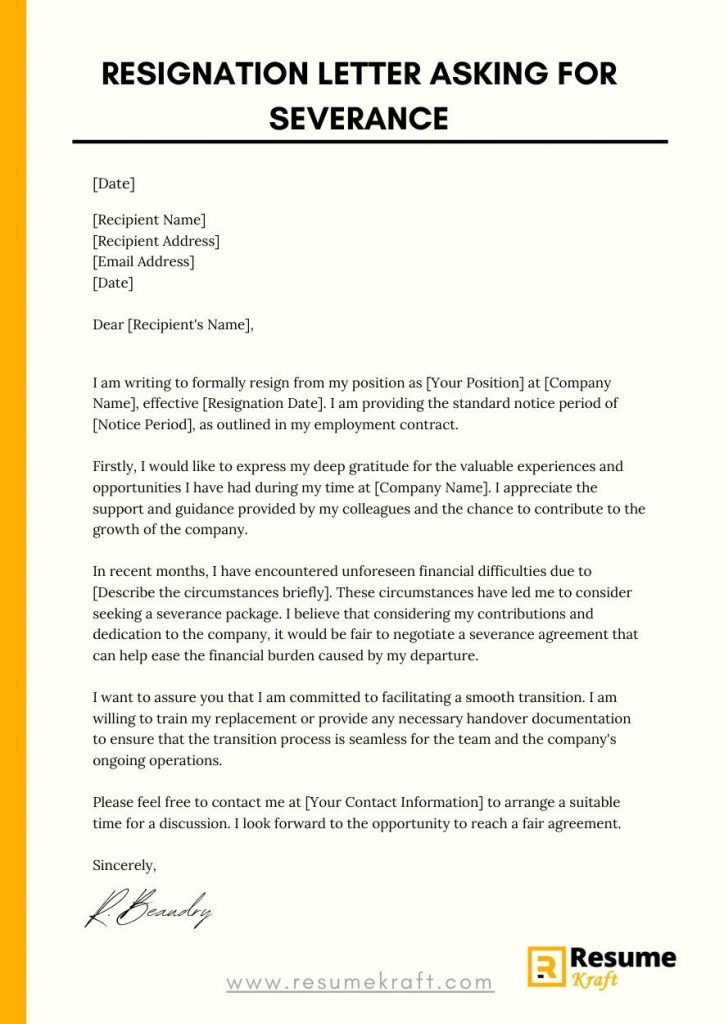
Printed Resignation Letter Sample
[Your Name]
[Your Address]
[City, State, ZIP Code]
[Date]
[Recipient’s Name]
[Recipient’s Job Title]
[Company Name]
[Company Address]
Dear [Recipient’s Name],
I am writing to formally resign from my position as [Your Position] at [Company Name], effective [Resignation Date]. I am providing the standard notice period of [Notice Period], as outlined in my employment contract.
Firstly, I would like to express my deep gratitude for the valuable experiences and opportunities I have had during my time at [Company Name]. I appreciate the support and guidance provided by my colleagues and the chance to contribute to the growth of the company.
In recent months, I have encountered unforeseen financial difficulties due to [Describe the circumstances briefly]. These circumstances have led me to consider seeking a severance package. I believe that considering my contributions and dedication to the company, it would be fair to negotiate a severance agreement that can help ease the financial burden caused by my departure.
I want to assure you that I am committed to facilitating a smooth transition. I am willing to train my replacement or provide any necessary handover documentation to ensure that the transition process is seamless for the team and the company’s ongoing operations.
I would appreciate the opportunity to discuss and negotiate the terms of a severance package that reflects my years of service and dedication to [Company Name]. I believe that an open and honest conversation will lead to a mutually beneficial resolution.
Thank you once again for the opportunities I have had at [Company Name]. I am confident that the company will continue to thrive, and I wish everyone success in their future endeavors.
Please feel free to contact me at [Your Contact Information] to arrange a suitable time for a discussion. I look forward to the opportunity to reach a fair agreement.
Sincerely,
[Your Name]
Email Resignation Letter Example
Subject: Resignation Letter – [Your Name]
Dear [Recipient’s Name],
I hope this email finds you well. I am writing to inform you of my decision to resign from my position as [Your Position] at [Company Name], effective [Resignation Date]. I understand that [Notice Period] is the standard notice period required as per my employment contract.
I would like to take this opportunity to express my sincerest gratitude for the numerous opportunities and growth I have experienced during my time at [Company Name]. I have learned valuable skills and worked alongside incredibly talented individuals who have made a significant impact on my professional development.
However, due to unforeseen financial circumstances that have arisen recently, I find myself in a position where I must seek a severance package. Given my commitment and dedication to the company, I believe it is fair to negotiate a severance agreement that can alleviate the financial burden associated with my departure.
In an effort to ensure a smooth transition, I am more than willing to assist with the training of my replacement or provide any necessary documentation to facilitate the handover process. I genuinely want the team and the company to succeed and will do everything in my power to support a seamless transition.
I kindly request the opportunity to have a discussion to negotiate the terms of a severance package that takes into account my numerous contributions and dedication to [Company Name]. I believe that an open dialogue will enable us to reach a mutually beneficial resolution.
Thank you once again for the opportunities and experiences I have had at [Company Name]. I have grown both personally and professionally, and I will remain supportive of the company’s future endeavors.
Please do not hesitate to reach out to me at [Your Contact Information] so we can arrange a suitable time for a discussion. I look forward to finding a fair agreement that respects both parties involved.
Best regards,
[Your Name]
Key Takeaways
Crafting a well-written resignation letter asking for severance is crucial when negotiating a fair package. Here are the key takeaways to remember:
- Include specific details in your resignation letter, such as your intention to resign, gratitude, reasons for seeking severance, and a willingness to negotiate.
- Avoid negative comments, demands, personal grievances, lengthy explanations, and emotional language in your letter.
- Format your resignation letter using a formal structure, professional tone, and proofread for errors.
- Use the provided resignation letter samples as a starting point to create your own customized letter.
By following these guidelines, you can create a professional resignation letter that effectively communicates your request for severance and sets the stage for a successful negotiation.
Frequently Asked Questions (FAQs)
Q: Can I negotiate a severance package when resigning?
Yes, you can negotiate a severance package when
resigning. It is not uncommon for employees to negotiate a severance package as part of their departure agreement. However, it is important to approach the negotiation process professionally and constructively. Clearly outline your reasons for seeking severance and be prepared to provide supporting evidence and documentation to strengthen your case. Remember to maintain a respectful and open attitude during the negotiation process to increase the likelihood of reaching a mutually beneficial agreement.
Q: What should I do if my employer refuses to offer a severance package?
If your employer refuses to offer a severance package, you may consider seeking legal advice to explore your options. Consulting with an employment lawyer can help you understand your rights and determine if there are any legal remedies available to you. Additionally, it may be worth engaging in further negotiation or discussing alternative compensation arrangements with your employer in an effort to find a compromise.
Q: How should I approach the negotiation process for a severance package?
Approaching the negotiation process for a severance package requires careful planning and consideration. Begin by researching industry standards and company policies regarding severance packages. Determine what would be a fair and reasonable request based on factors such as your length of service, contributions to the organization, and the financial impact of your departure. Prepare a well-reasoned argument supported by facts and evidence, and be open to compromise and discussion. Maintaining a professional and respectful attitude throughout the negotiation can improve the chances of a successful outcome.
Q: Is it necessary to provide a notice period when resigning and asking for severance?
Providing a notice period when resigning is generally considered a professional courtesy, and in many cases, it may be required by your employment contract. However, if you have already discussed the possibility of resigning with your employer and negotiating a severance package, it is up to both parties to decide whether a notice period is necessary. It is important to clarify this aspect during the negotiation process to ensure a smooth transition.
Q: Can I use a resignation letter asking for severance as a starting point for negotiation?
Yes, a well-written resignation letter asking for severance can serve as a starting point for negotiation. It provides a clear and formal communication of your intentions and can initiate the discussion surrounding your severance request. However, keep in mind that the letter itself is just the first step. The negotiation process involves ongoing communication and dialogue with your employer to reach a mutually agreeable severance agreement.
Conclusion
Writing a resignation letter asking for severance requires careful thought and preparation. By including the necessary elements, maintaining a professional tone, and avoiding common pitfalls, you can effectively communicate your request and initiate the negotiation process. Utilize the provided resignation letter samples as a guide, but remember to personalize your letter based on your unique circumstances. With a well-crafted resignation letter and a constructive approach to negotiations, you can increase the chances of securing a successful severance package.

